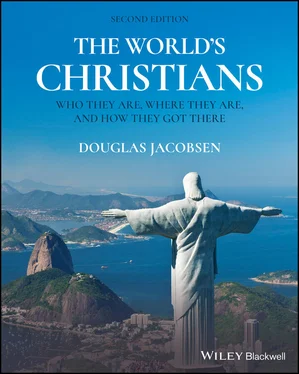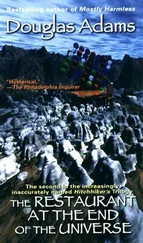The region of Palestine and the Jewish people had a convoluted history during the next five centuries. The Middle East was conquered by Alexander the Great in 333 BCE, and after his death several of his military generals fought for control over Palestine. Eventually one of those generals, Seleucus, established a kingdom in the region, and later one of his descendants, Antiochus IV, launched a period of persecution directed against Judaism in general and especially against more religiously conservative Jewish traditionalists. His actions sparked a twenty‐five‐year revolt against Seleucid rule, led by a person named Judah Maccabee. Eventually the revolt was successful, and for about a century Jews once again had their own kingdom in Palestine. In 63 BCE, however, the expanding Roman Empire annexed the region and ended Jewish self‐rule.
By the first century CE, Judaism had developed its own inner diversity with parallels to the diversity that would later characterize Christianity. Four Jewish sub‐groups were especially prominent: the Pharisees, who stressed the law and personal piety; the Sadducees, who emphasized traditional temple worship; the Zealots, who were violently opposed to Roman rule; and the Qumran community (also known as the Essenes), who assumed that the end of the world was near and that a final battle between good and evil was about to commence. The Samaritans, another quasi‐Jewish group, claimed descent from two of Israel’s ancient tribes, Ephraim and Manasseh. In addition, an increasing number of Gentiles (non‐Jews) were calling themselves “God‐fearers” and beginning to adopt Judaism’s ideals and values without formally becoming Jews themselves.
This was the complex world of Jewish faith into which Jesus was born and which shaped the early Christian movement. The diversity of Judaism that already existed opened plenty of space for adding new Jewish voices to the mix. Jesus’s voice was one of them, and at first neither he nor his followers thought of the movement as anything other than Jewish. Jesus and his followers obeyed Jewish law, they attended synagogue services, they participated in Jerusalem’s temple rituals, and they were proud of being Jewish. When a Gentile woman once sought help from Jesus, he called her a dog because she was not Jewish; the apostle Peter thought it was degrading to eat with non‐Jews; and even the apostle Paul, who championed Gentile inclusion in the movement, happily described himself as proud to be “a member of the people of Israel, of the tribe of Benjamin, a Hebrew born of Hebrews” (Philippians 3:5).
Many of Christianity’s core beliefs, like monotheism and an ethic of love for God and neighbor (the “Golden Rule”), were taken wholesale from Judaism, and the Christian practice of church meetings is clearly derived from the synagogue model. Perhaps most notably, Christianity retained the Hebrew scriptures as part of its own collection of holy writings. In fact, the Hebrew scriptures make up fully three‐quarters of the text of the Christian Bible. However, the two religious movements eventually began to go their separate ways, and the history of the Bible reflects this divide. By the mid‐second century of the Christian era, Christians began referring to the Hebrew scriptures as the “Old Testament” in contrast to their own writings, which were being collected and organized as the “New Testament.” As soon as this way of thinking became the norm, Christians started interpreting the Old Testament (the Hebrew scriptures) almost entirely as pointing toward, and being fulfilled by, the message of the New Testament, and any sense of the Hebrew scriptures having their own separate voice was lost – a sure sign that the two movements were rapidly drifting apart.
The split between Judaism and Christianity was precipitated by Christianity’s ever‐increasing emphasis on the deity of Christ, but other dynamics were also in play. Initially, it was politically advantageous for Christians to be seen as a particular subset of Jews, because Judaism was an officially tolerated religion within the Roman Empire, and new religious movements (like Christianity) could never expect to get that kind of status. But in 70 CE Palestinian Jews revolted against Roman rule. The revolt was crushed, the Jewish Temple was destroyed, and Judaism ceased to be a tolerated religion. After a second Jewish revolt in the 130s, Rome began to view Jews as traitors and terrorists. In this context, being associated with Judaism became a political liability, rather than a political advantage, and Christians living within the Roman Empire began to distance themselves from the Jewish community whenever and however they could. Jews responded in kind, and soon many traditional Jews began viewing Christians not only as Jewish heretics, but as religious enemies. In territories outside the Roman Empire, where being Jewish never had any significant political advantage, Jewish–Christian relations were more straightforward even though they were also sometimes contentious. As a result, Christians and Jews remained religious dialogue partners in eastern Syria and Persia much longer than they did in the Roman Empire. Eventually, however, these links were severed as well.
As the social distance between Christians and Jews increased, Christian zealots began to develop a variety of negative and grotesque caricatures of Jews. As Christianity grew in size and power, those negative stereotypes fueled a long and shameful history of Christian antisemitism and persecution of Jews. The objective reality is, however, that Christianity has Jewish roots and that many of its central values, ideas, and practices are derived directly from Judaism. In recent years, many Christians have begun to re‐acknowledge that fact, and hopefully this is a sign that Christianity is finally moving beyond its past antisemitism.
Christian History and Globalizations
Christianity’s journey from being a small Jewish religious sect to a global faith was neither smooth nor direct. The first five hundred years of the movement were primarily devoted to sorting out the central theological ideas and ecclesiastical practices that still define Christianity today. In these early centuries, Christianity took on the institutional form of church (local communities of Christians meeting weekly for worship), the doctrines of Christ’s divinity and the Trinity were formed, and the Christian Bible was created. Much of Christianity’s early story was played out in the Roman Empire, but alternative notions about what it might mean to be a follower of Jesus were already appearing in other locations.
The next five hundred years of Christian history (500–1000) were a time of rapid expansion, especially in the East. This is when the movement became global for the first time, and it is also when Christianity began to fragment into a variety of distinct sub‐traditions. During these centuries, more than half of the world’s Christian population lived in Asia, but the Christian population was also growing in Africa (in Ethiopia and Nubia) and in Europe. This is when Christianity met its first new rival, a religion founded after the rise of Christianity that claimed to supersede Christianity. That religion was Islam, and Christianity has had a complex and sometimes violent relationship with Islam ever since.
During the years 1000–1500, Christianity experienced a great contraction geographically. Asian Christianity was decimated by persecution, war, and social unrest, while western European Christianity grew rapidly in terms of numbers, wealth, and a desire to control the Christian movement worldwide. By the year 1500, more than 85 percent of the world’s Christians lived in Europe. Most of those European Christians believed that their version of faith was the only true and proper way of following Jesus. Christianity came to be seen worldwide as a white, western religion, a perspective with which most European Christians emphatically agreed.
Читать дальше












